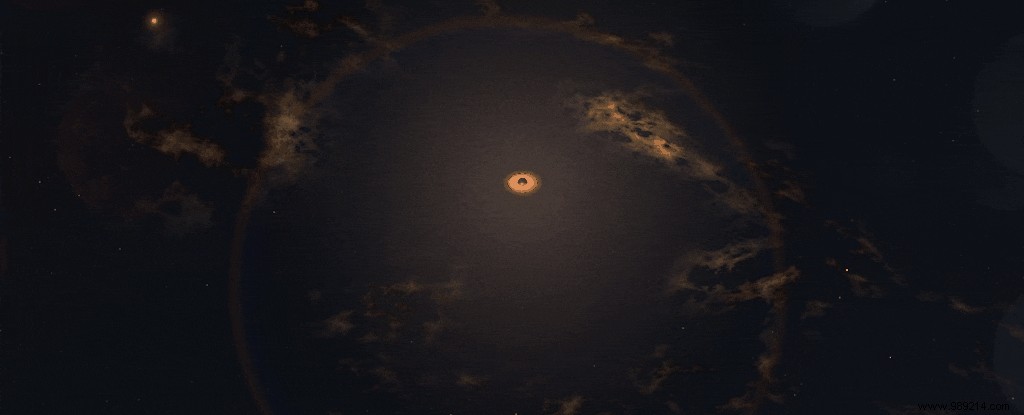Ruling like clockwork, a distant galaxy has been lighting up like fireworks since at least 2014. According to a team of astronomers, these repetitive events testify to the slow agony of a star trapped around a black hole.
It all started a little over six years ago, in November 2014. At the time, astronomers relying on the All Sky Automated Survey for SuperNovae (ASAS -SN), an automated program to search for new supernovae driven by the University of Ohio, had come across a "flash" emanating from a galaxy found 570 million light-years away> of the earth. Initially, the researchers naturally described the event as an ordinary supernova (explosion of a star at the end of its life).
A few years later, a second team of astronomers looked at the ASAS-SN data. The latter finally isolated seventeen other eruptions of the same kind from the same region. More interestingly, each of these events was precisely 114 days apart . From then on, the researchers ruled out the supernova hypothesis, favoring the idea of a star trapped in a deadly orbit around a supermassive black hole.
A supermassive black hole that consumes matter (usually when they shred a star that has passed too close) emits a tremendous amount of energy in the form of electromagnetic radiation. The object then appears very shiny. In some cases, powerful jets of matter may also emerge.
However, these events are usually one-time . Here, on the other hand, they are repetitive. Instead of following a roughly circular path, like the Earth around the Sun, the star concerned in this specific case follows an extremely elongated orbit which brings it very close to the black hole, before being touched, every 114 days.

To validate the cycle, the researchers also predicted the dates on which these eruptions were to occur during the year 2020 (May 17, September 7 and December 26). As a result, the "Flashes of Light" appeared at the right time every time . "It's really exciting. We've seen black holes do a lot of things, but we've never seen them erupt so regularly “, says Patrick Vallely, co-author of the study.
This new discovery could help astronomers spot more of these events in the future. We could then better understand the phenomena of mass accretion of black holes. The study will soon be published in The Astrophysical Journal.